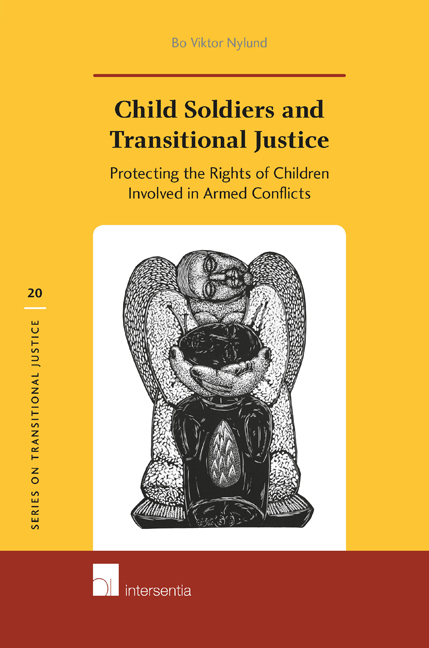 Child Soldiers and Transitional Justice
Child Soldiers and Transitional Justice Published online by Cambridge University Press: 12 December 2017
“I am opposed to the recruitment of any person under 18. I think it is dangerous for children like myself to join a movement or even government forces if you end up taking part in military operations. I believe that school is the natural place for any child, and when I get back home, I will pursue my education once again.”
INTRODUCTION
Following the first codification of the prohibition against child recruitment in international law in the late 1970s, the global debate about the recruitment and use of children in armed conflicts took on a new level of importance two decades later. The 1990s marked the first decade of implementation of programmes to “rehabilitate” children who had been involved in armed conflicts.
The use of child soldiers is not a new phenomenon. Children have historically suffered disproportionately during war, and armed groups and forces have recruited children to serve in armed conflicts. But as international responses to providing for the recovery and reintegration needs of former child soldiers increased, the flow of information and awareness of this issue as a child rights violation led to a great deal of attention. As the focus intensified, approaches to ending the use of child soldiers evolved and diverged into separate actions by varying actors, not always consistently pulling in the same direction, yet all with the same aim in mind.
This book offers an approach to establishing a coherent synthesis that will contribute to further protection of the rights of children in armed conflicts, building on developments through the spring of 2015. Chapter 1 outlines the overall objectives and scope, and the framework of analysis, and provides an introduction to the issue of child recruitment and how it entered the international legal and political debates.
OBJECTIVE AND SCOPE
Transitional justice is the organizing framework for this work on child soldiers, and an overall objective is to identify ways to enhance the response to address child recruitment.
Since the 1980s, judicial and non-judicial approaches associated with a society's eff orts to come to terms with a legacy of abuses – the transitional justice mechanisms – have sought to address accountability, truth-seeking, institution building, and reconciliation and recovery among war-affected populations.
To save this book to your Kindle, first ensure [email protected] is added to your Approved Personal Document E-mail List under your Personal Document Settings on the Manage Your Content and Devices page of your Amazon account. Then enter the ‘name’ part of your Kindle email address below. Find out more about saving to your Kindle.
Note you can select to save to either the @free.kindle.com or @kindle.com variations. ‘@free.kindle.com’ emails are free but can only be saved to your device when it is connected to wi-fi. ‘@kindle.com’ emails can be delivered even when you are not connected to wi-fi, but note that service fees apply.
Find out more about the Kindle Personal Document Service.
To save content items to your account, please confirm that you agree to abide by our usage policies. If this is the first time you use this feature, you will be asked to authorise Cambridge Core to connect with your account. Find out more about saving content to Dropbox.
To save content items to your account, please confirm that you agree to abide by our usage policies. If this is the first time you use this feature, you will be asked to authorise Cambridge Core to connect with your account. Find out more about saving content to Google Drive.